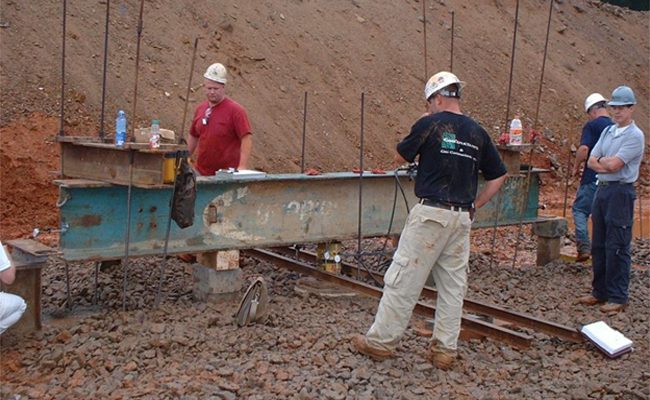
Are you looking for a list of building materials? Building a home may be done using a wide range of materials. The availability and cost-effectiveness of building materials are the primary considerations when selecting them for construction projects. With the help of construction material testing company, you can test the quality of the construction material and also make sure whether the building material is actually made of high quality or not. You can click here to get more information about this company.
It is vital to evaluate both their advantages and disadvantages when selecting materials. The following is a thorough list of the materials that may be used in the construction of a house:
What are the primary home building materials?
Wood
Wood has been used as a building material for thousands of years. It has various characteristics that make it a great option even in an age dominated by manufactured and synthetic materials, such as durability and flexibility.
There are several natural benefits supplied by wood. Many rural houses have been constructed chiefly of wood, a sustainable building resource. In addition to being lightweight and robust, wood may also be utilized to help the environment by absorbing carbon dioxide.
Electrical applications benefit from wood’s high electrical resistance, making it more stable and safe than other materials. Many architects and engineers like to utilize this material for their residential construction projects because of its outstanding insulating properties.
Because of its sound absorption properties, this material is well suited for urban living and working environments. Furthermore, wood has a natural scent and appearance that may help increase your property’s market value.
Wood is also lightweight; it is used to construct most doors and door frames. Despite this, wood is prone to various problems such as fire, water damage, termites, and decay, among others.
Recycled steel and composite lumber, on the other hand, are more environmentally friendly than traditional wood products like pine and oak.
Cement
Houses are almost always built with cement as the primary binding agent. More heat can be stored in this material than in others because of its longer heating and cooling cycles. Their strength and ease of production make them a popular choice.
There are, however, several drawbacks, including a large carbon footprint and the risk of cracks. It is capable of absorbing both dirt and moisture. Cement is also prone to become stiff and brittle when it is put to use.
Concrete
Concrete is a mixture of fine and coarse particles held together by cement and a liquid binder. Using concrete to build a home is a fantastic concept. A house foundation made of this material is ideal because of its versatility, low cost, and high level of strength. Due to its strength and resistance to natural pressures, concrete is often used in the making of houses and building foundations.
It is also widely used to build walls and other home structural components. The whole house is reinforced with concrete beams and columns. It is also important to remember to use various reinforcement materials to create a unified and robust structure. However, engineers and architects must account for the time it takes concrete to set when planning construction schedules for concrete construction.
Bricks and Blocks
Bricks and blocks are made out of clay, a natural material. They are available in various sizes, shapes, and configurations. They have been in use in the construction industry for quite some time. One of their most significant benefits is that they are heat-stable, made from locally available materials, and are reasonably priced, among other things. They offer a diverse range of moisture, insulation, and residents.
This kind of material is resistant to deterioration and fire, making it an excellent choice for use as foundations. Bricks are often made from renewable materials, making them an environmentally friendly option. One of its disadvantages is their weight, which mandates the construction of solid foundations to support them.
They are more prone to mold formation in damp conditions than in dry ones. Additionally, they can potentially disrupt the environment, which might result in the loss of construction.
Glass
Sand and silicates are the most common ingredients in the production of glass. Both commercial and residential structures are increasingly being built using glass. In an urban setting, glass may provide a sense of refinement and sophistication. Outside, it has a stunning aesthetic appeal and is UV resistant, and offers more light and privacy than other materials could.
However, glass has several disadvantages, the most significant of which are the costly initial purchase and maintenance costs and the security risks associated with its use.
Metal
House building relies heavily on aluminum and steel. Skyscrapers, houses, and other structures typically employ metal as a structural framework or exterior surface covering. Aluminum and steel alloys are the most often utilized metals in construction.
Fire-resistant, they are adaptable to various climatic situations and are both scalable and strong. Their disadvantages include their susceptibility to corrosion, difficulty in sealing, high acquisition and maintenance costs.
Ceramic Tiles
Ceramic tiles are often seen in bathrooms and kitchens, not surprising. This is because ceramic is water-resistant, making it easy to remove stains. Ceramic is also a popular option since it comes in various styles, making it simple for customers to match the ceramic to their existing décor.
Plastics
The use of plastic in constructing a home is an excellent investment. Plastics are frequently employed in the construction sector because of their vast range of qualities, which enable them to be used for various applications.
One of the most significant benefits of plastics is that they are far less expensive than most other materials. Because of their lighter weight and excellent corrosion resistance are the most often used material for water pipe construction. Drawbacks include flammability, and it is also non-biodegradable and polluting.
Leave a Reply